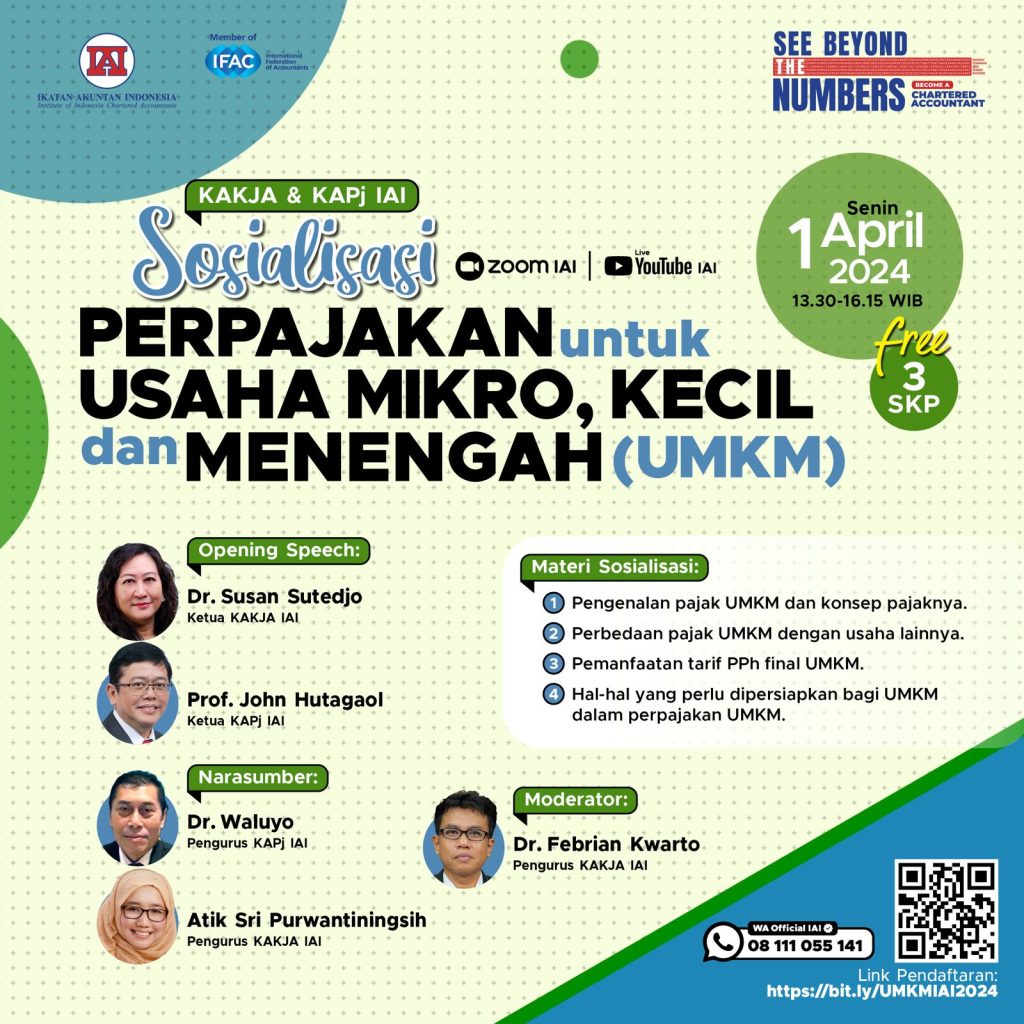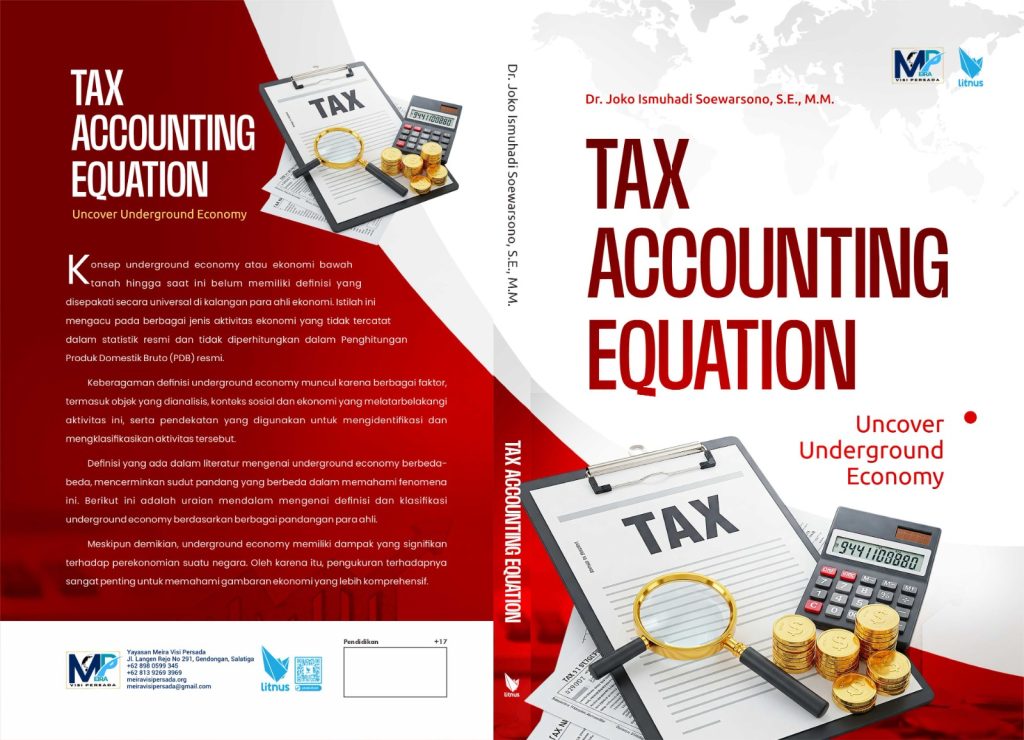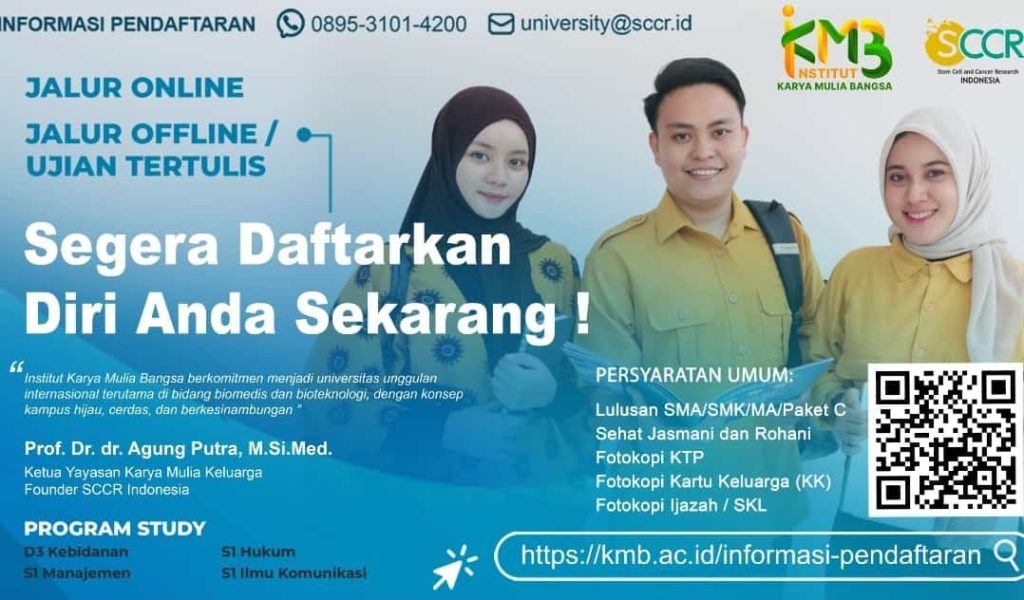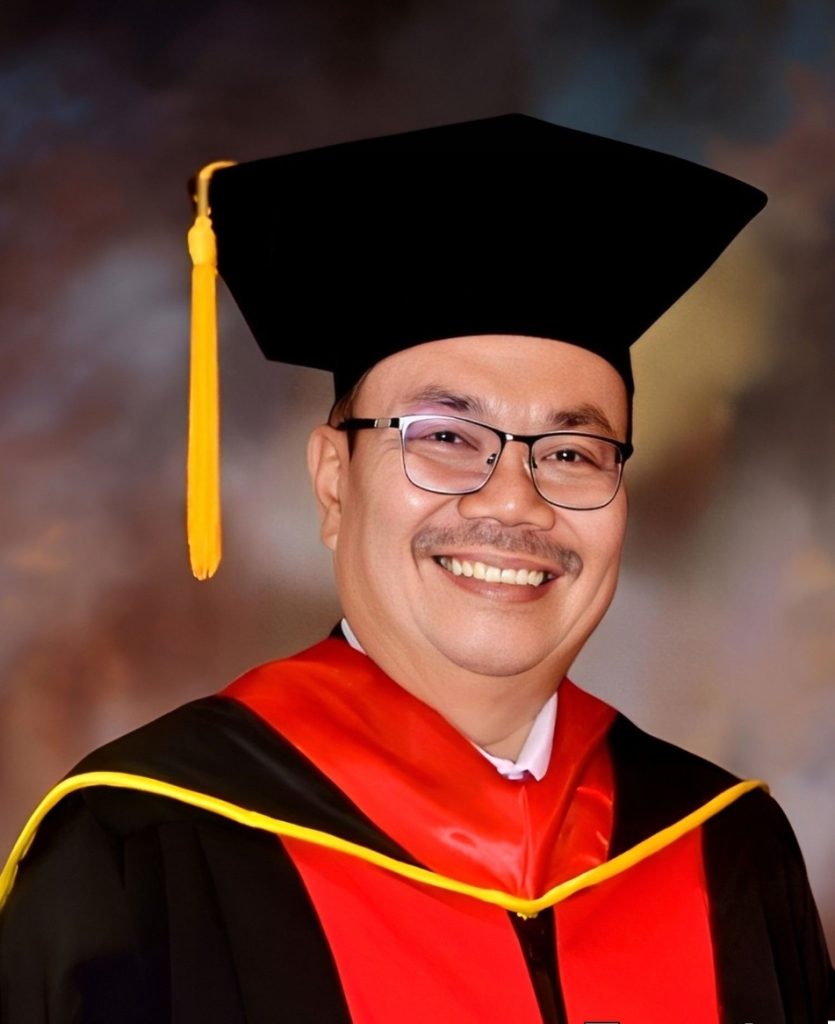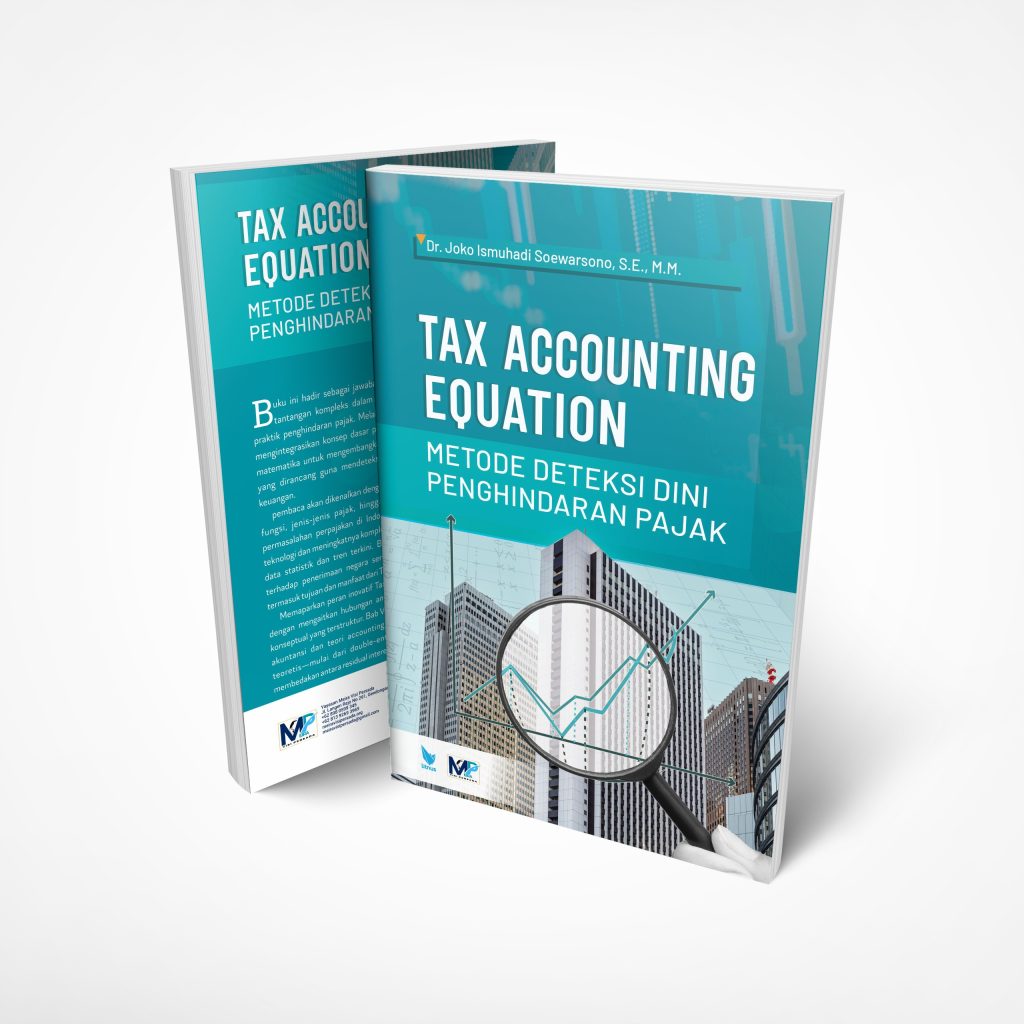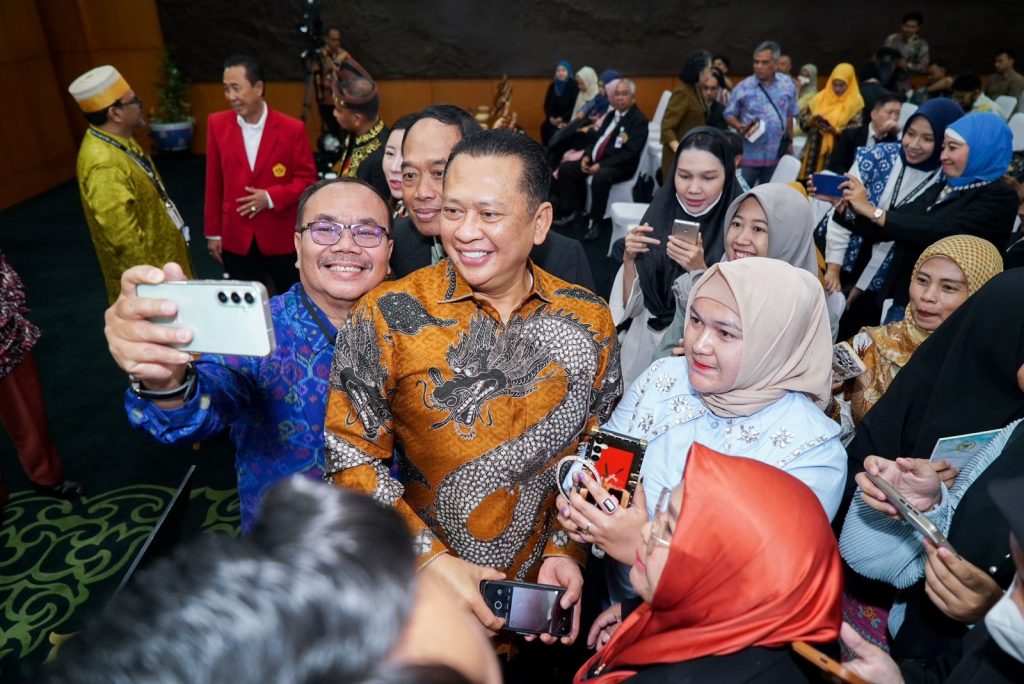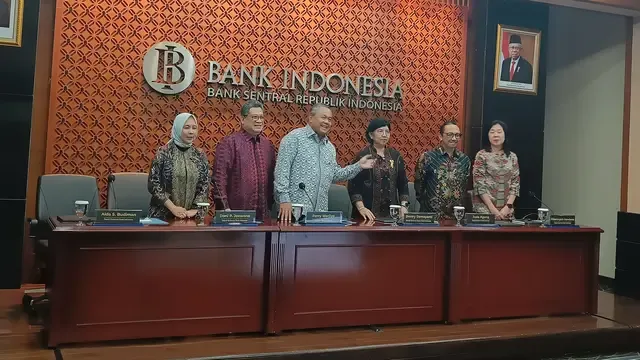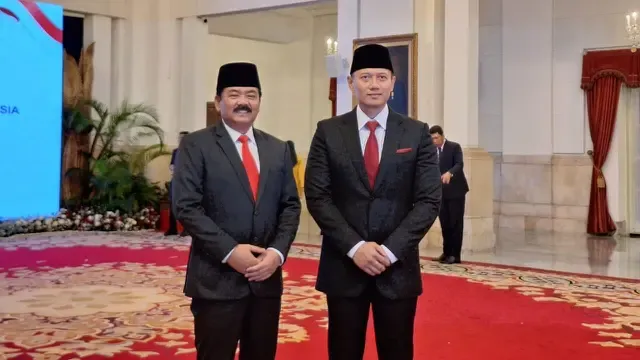
The Evolving Landscape of the Accounting Equation: A Legacy from Pacioli to Soewarsono
- Ekonomi
Sunday, 30 March 2025 04:28 WIB
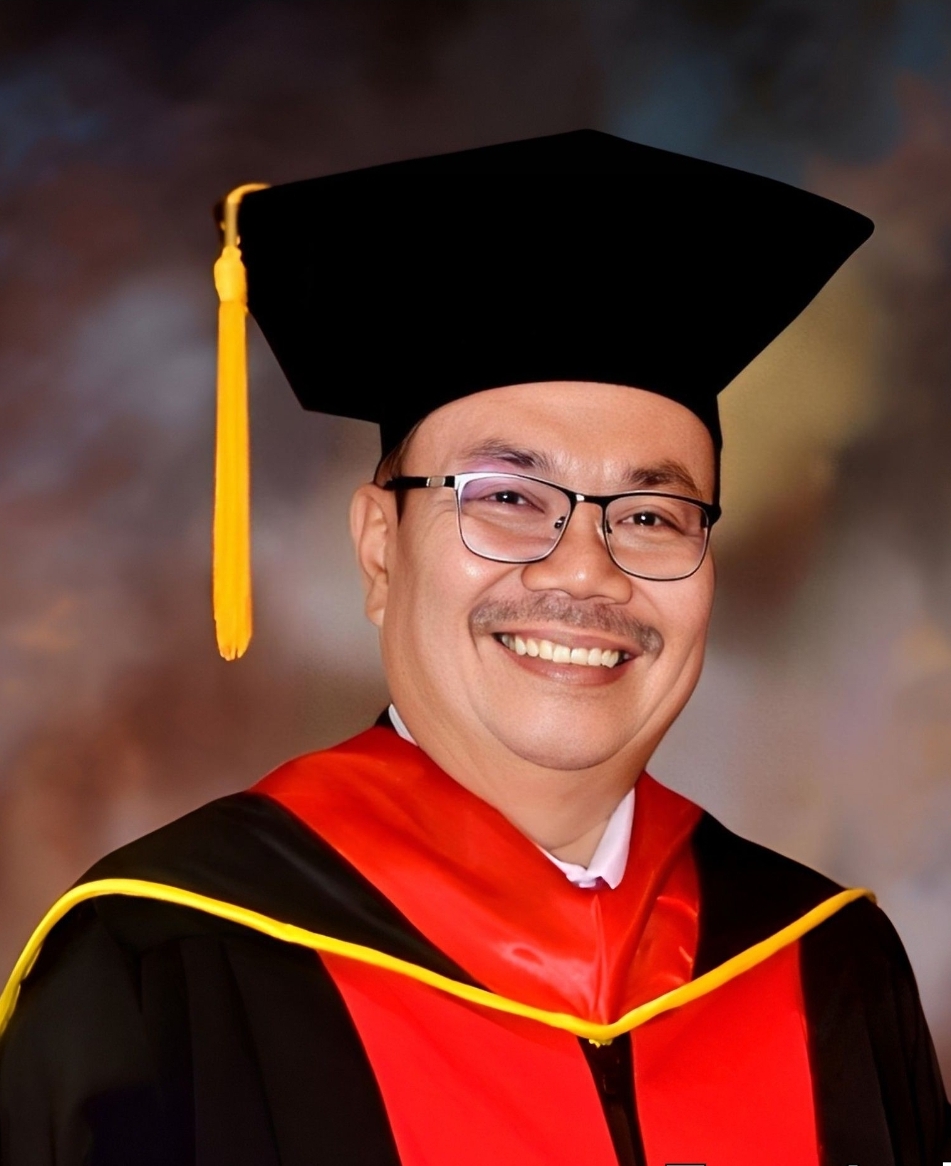
Jakarta, fiskusnews.com:
The accounting equation stands as a cornerstone of financial accounting, representing the fundamental relationship between a company’s assets, liabilities, and equity . This seemingly simple formula serves as the bedrock of the double-entry bookkeeping system and underpins the entire structure of modern accounting principles . However, the equation has not remained static. Its evolution reflects the increasing complexity of economic activities and the continuous need for more sophisticated and specialized financial reporting tools. This report examines the monumental legacy of this evolution, tracing its path from Luca Pacioli’s basic accounting equation to Sony Warsono’s expanded version and finally to Joko Ismuhadi Soewarsono’s tax accounting equation. By analyzing the definition, historical context, rationale, and impact of each iteration, this report aims to provide a comprehensive understanding of how this fundamental concept has adapted to the changing world of finance.
The Cornerstone: Luca Pacioli’s Basic Accounting Equation (Late 15th Century)
At its core, the basic accounting equation is defined as Assets = Liabilities + Owner’s Equity (or Capital) . This equation signifies that a business’s resources (assets) are financed by either external obligations (liabilities) or the investment of the owners (owner’s equity) . Assets represent the total value of the property that a business possesses and utilizes in its operations
. Liabilities reflect the extent to which a company’s assets are financed by third parties, such as banks and other financial institutions . Owner’s equity represents the residual claim of the owners on the assets of the business after all liabilities have been settled . Understanding these fundamental components is essential, as they constitute the building blocks upon which all subsequent expansions and modifications of the accounting equation are based .
The formulation and widespread dissemination of this foundational equation are largely attributed to Luca Pacioli (1445-1517), an Italian mathematician and Franciscan friar who is widely regarded as the “Father of Accounting” . Pacioli’s significant contribution to the field of accounting came through his book “Summa de Arithmetica, Geometria, Proportioni et Proportionalita,” published in 1494 . While Pacioli was primarily a mathematician, his “Summa” was a comprehensive mathematical work that notably included a detailed section on bookkeeping . This inclusion underscores the initial close relationship between mathematics and accounting principles . Within this book, Pacioli meticulously documented and popularized the double-entry bookkeeping system, which was already in use by Venetian merchants but had not yet been formally codified . His detailed explanation of this system, centered around the principle that every transaction affects at least two accounts and that the accounting equation must always remain in balance, played a crucial role in standardizing accounting practices .
Before Pacioli’s work, accounting practices were less systematic and varied considerably among different merchants and regions . His publication provided a structured framework for recording financial transactions, representing a significant advancement in financial record-keeping .
The basic accounting equation, as summarized by Pacioli, has had an enduring impact on the field of accounting . It remains the fundamental principle guiding businesses, both large and small, in maintaining accurate financial records . Even with the advent of modern technology, including sophisticated accounting software and digital accounting systems, Pacioli’s foundational equation continues to be the cornerstone . The principles of double-entry bookkeeping and the accounting equation have seamlessly transitioned into these modern systems, forming the backbone of programs like QuickBooks and SAP . This adaptability highlights the robustness and enduring nature of Pacioli’s contribution. However, Pacioli’s legacy is not without historical controversy. Some critics have accused him of plagiarizing parts of his work from his contemporary, Piero della Francesca . Regardless of the validity of these claims, the profound influence of Pacioli’s “Summa” on Renaissance commerce and the subsequent development of accounting is undeniable .
Expansion for a Broader View: Sony Warsono’s Expanded Accounting Equation (21st Century)
In the 21st century, the accounting equation has continued to evolve to address the increasing complexities of the modern business environment. A notable figure in this contemporary evolution is Sony Warsono, a lecturer and professor at Universitas Gadjah Mada in Indonesia . Warsono’s research focuses on the mathematical underpinnings of accounting and the limitations of current accounting standards . His work represents a modern academic endeavor to re-examine the foundational principles of accounting, particularly the role of mathematics, in addressing perceived inadequacies in existing frameworks .
The conventional expanded accounting equation builds upon Pacioli’s basic formula by incorporating elements from the income statement. This expanded form is often expressed as: Assets = Liabilities + Equity + Revenues – Expenses . In some variations, it may also include Investments and Dividends . This expansion provides a more dynamic view of how business operations, through revenues and expenses, ultimately impact owner’s equity . Revenues, representing the income generated from business activities, increase equity, while expenses, the costs incurred in generating revenue, decrease equity . This expanded equation links the balance sheet with the income statement, offering a more comprehensive understanding of a company’s financial performance over a period of time .
However, Warsono offers a critical perspective on this conventional expanded equation, particularly concerning the placement of expenses on the right side of the equation . He argues that this placement does not logically align with the fundamental theory that the right-hand side of the accounting equation represents claims against assets or sources of funds . Expenses, in his view, do not represent such claims . To address this perceived inconsistency, Warsono proposes an alternative expanded accounting equation based on the “law of funds” . This alternative can be expressed as: Assets + Expenses = Liabilities + Equity + Revenues . This rearrangement emphasizes that the uses of funds (assets and expenses) should always equal the sources of funds (liabilities, equity, and revenues) . This perspective aims to provide a more intuitive and mathematically consistent representation of the fundamental accounting relationships . The rationale behind this expansion and rearrangement is to offer a more complete and logically sound view of financial activities and their impact on equity . By including revenues and expenses directly within the equation, it becomes clearer how operational performance drives changes in owner’s equity . Warsono’s work underscores the importance of mathematical logic and consistency in the very foundation of accounting principles, advocating for a more theoretically robust framework .
Warsono’s contributions extend beyond theoretical refinement. He has also focused on the academic and practical impact of his work, particularly in the realm of accounting education . He has been a proponent of incorporating a mathematics-based learning method, termed “Accountamatics,” into accounting curricula . This approach aims to improve accounting education by emphasizing the underlying mathematical logic of accounting principles, fostering a deeper understanding rather than mere memorization of rules . Furthermore, Warsono’s research seeks to address inconsistencies and limitations within current accounting standards by revisiting the fundamental mathematical structure of accounting . His work encourages a critical examination of established conventions and proposes a more logically coherent framework for understanding and applying accounting principles .
Accounting in the Realm of Taxation: Joko Ismuhadi Soewarsono’s Tax Accounting Equation (21st Century)
Another significant development in the evolution of the accounting equation in the 21st century is the emergence of the tax accounting equation, primarily associated with the work of Joko Ismuhadi Soewarsono. Soewarsono is a PhD candidate at Padjadjaran University in Indonesia, with expertise in areas such as tax planning and financial engineering . He also holds the position of Tax Auditor at the Directorate Generale Tax in Indonesia, providing him with practical insights into the application of accounting in the context of taxation . His doctoral research focused on tax manipulation and money laundering, indicating a strong interest in the intersection of accounting principles and tax regulations .
Soewarsono has introduced the concept of the “Persamaan Akuntansi Pajak,” or Tax Accounting Equation . This specialized form of the accounting equation focuses on explicitly incorporating tax considerations into the fundamental accounting framework . The primary aim of this expansion is to provide a tool for detecting tax avoidance and evasion . While the specific formulation of the tax accounting equation is not explicitly detailed in the provided snippets, it is implied that it expands upon the basic or expanded equation to include tax-related accounts and considerations . This might involve incorporating elements such as tax liabilities, tax expenses, deferred tax assets, or other accounts relevant to taxation.
The rationale behind developing the tax accounting equation stems from the need to address tax loopholes and combat tax manipulation by corporations . Soewarsono’s work suggests that by integrating tax-specific elements into the accounting equation, it can serve as an early detection tool for identifying potential instances of tax avoidance and/or tax evasion . This approach recognizes the significant impact of taxation on a company’s financial position and performance and seeks to provide a framework for analyzing financial data from a tax compliance perspective.
Soewarsono’s work on the tax accounting equation has the potential for both academic and practical impact. He has disseminated this concept through articles and possibly a book titled “Tax Accounting Equation (TAE)” . This suggests an effort to formalize and share this approach with both the academic community and practitioners in the field of taxation. Furthermore, the development of such an equation has practical implications for tax authorities, such as the Directorate General of Taxes, as it could provide a valuable tool for the early detection of tax irregularities and potentially enhance the effectiveness of tax audits .
A Comparative Analysis: Tracing the Advancements
The evolution of the accounting equation from Pacioli’s basic formulation to the expanded versions by Warsono and Soewarsono represents a significant journey in the field of accounting. Each iteration builds upon the previous one, reflecting the changing needs and complexities of the economic and regulatory landscape.
Pacioli’s basic accounting equation (Assets = Liabilities + Equity) provides a fundamental snapshot of a company’s financial position at a specific point in time, focusing on the core relationship between resources and the claims against them . It serves as the foundation for the balance sheet. Warsono’s alternative expanded accounting equation (Assets + Expenses = Liabilities + Equity + Revenues) offers a more dynamic perspective by incorporating the results of a company’s operations (revenues and expenses) and emphasizing the flow of funds . Finally, Soewarsono’s tax accounting equation (likely an expansion to include tax elements) represents a further specialization, focusing on the critical area of tax compliance and the detection of tax avoidance and evasion .
The following table summarizes the key differences and advancements in each iteration:
| Feature | Basic Accounting Equation (Pacioli) | Expanded Accounting Equation (Warsono – Alternative) | Tax Accounting Equation (Soewarsono) |
| Formula | Assets = Liabilities + Equity | Assets + Expenses = Liabilities + Equity + Revenues | (Likely) Expansion to include tax elements |
| Main Focus | Fundamental financial position | Flow of funds, operational impact on equity | Tax compliance, detection of tax avoidance |
| Historical Context | Renaissance, rise of double-entry | 21st Century, critique of existing standards | 21st Century, focus on tax regulation |
| Key Proponent | Luca Pacioli | Sony Warsono | Joko Ismuhadi Soewarsono |
The Ripple Effect: Academic and Practical Impact
The impact of these accounting equations extends across both academia and the practical world of business. Pacioli’s work laid the very foundation for modern accounting education, establishing the double-entry system that remains central to accounting curricula worldwide . Warsono’s “Accountamatics” method represents a contemporary effort to reform accounting education by emphasizing the mathematical logic inherent in accounting principles, potentially leading to a more profound understanding for students . Soewarsono’s tax accounting equation could influence education in specialized areas like tax accounting and forensic accounting, providing a framework for analyzing financial data with a focus on tax compliance .
In terms of accounting research, Pacioli’s “Summa” is a seminal text, providing historical insights into the evolution of accounting practices . Warsono’s work contributes to ongoing research in accounting theory, the mathematical basis of accounting, and accounting education, challenging existing paradigms and proposing alternative perspectives . Soewarsono’s research opens new avenues for investigating the integration of tax principles within the accounting equation, potentially leading to the development of more sophisticated tools for tax risk assessment and fraud detection .
Practically, Pacioli’s equation is the bedrock of all modern financial accounting and reporting, underpinning the financial statements used for decision-making globally . Warsono’s alternative expanded equation offers a potentially more logically sound framework for financial analysis and understanding the flow of funds within an organization . Soewarsono’s tax accounting equation has direct practical implications for businesses in managing their tax obligations and for tax authorities in their efforts to detect and prevent tax irregularities .
Reflecting the Times: Evolution and Environmental Factors
The evolution of the accounting equation is intrinsically linked to changes in economic structures and regulatory environments. Pacioli’s work emerged during the Renaissance, a period marked by significant commercial expansion that necessitated more sophisticated record-keeping methods to manage growing trade and business complexities . The development of the expanded equation reflects the increasing intricacy of business transactions and the need to connect operational performance with a company’s overall financial position . The emergence of Soewarsono’s tax accounting equation is a direct response to the growing importance of taxation in economic activity and the continuous efforts to combat tax avoidance and evasion in an increasingly complex global financial landscape .
Regulatory environments have also played a crucial role. The establishment of accounting standards and regulations over time has shaped how the accounting equation is applied and interpreted in financial reporting [Implied]. The increasing focus on tax compliance and the prevention of tax evasion has directly contributed to the development of specialized tools like Soewarsono’s tax accounting equation, highlighting the influence of regulatory priorities on the evolution of accounting principles .
Scholarly Significance and Enduring Legacy
The scholarly significance of these contributions is profound. Pacioli’s “Summa” is a landmark publication that not only standardized accounting practices but also earned him the enduring title of “Father of Accounting” . Warsono’s work represents a contemporary effort to critically analyze and refine the theoretical underpinnings of accounting, contributing to the ongoing scholarly discourse in accounting theory and encouraging a more mathematically rigorous approach to the field . Soewarsono’s tax accounting equation demonstrates the adaptability of the fundamental accounting framework to address specific economic and regulatory challenges, highlighting the continuous evolution of accounting principles to meet contemporary needs in areas like tax compliance and financial crime prevention .
Navigating Different Perspectives: Criticisms and Alternatives
While the evolution of the accounting equation represents significant advancements, it is not without criticisms and alternative perspectives. Pacioli faced accusations of plagiarism. Warsono critiques the conventional expanded accounting equation for its logical inconsistencies. The tax accounting equation, being a more recent development, may face scrutiny regarding its specific formulation and broad applicability [Implied]. Furthermore, there are differing views on the fundamental nature of accounting, with some scholars arguing that it is primarily a social science rather than being rooted solely in mathematical principles . These criticisms and alternative perspectives are crucial for the ongoing development and refinement of accounting theory and practice.
Conclusion
The journey of the accounting equation, from Luca Pacioli’s foundational concept to the expanded and specialized versions proposed by Sony Warsono and Joko Ismuhadi Soewarsono, illustrates a remarkable evolution in the field of accounting. Each contribution reflects the changing economic and regulatory landscapes, addressing new complexities and challenges. Pacioli’s basic equation remains the bedrock, providing the fundamental framework for financial accounting. Warsono’s work seeks to enhance the logical consistency and pedagogical effectiveness of the expanded equation by emphasizing its mathematical underpinnings. Soewarsono’s tax accounting equation demonstrates the adaptability of this core concept to address specific regulatory concerns, particularly in the realm of tax compliance. This continuous evolution underscores the enduring relevance and adaptability of the accounting equation as a fundamental principle in the world of finance and business.
- huddlestontaxcpas.com, https://huddlestontaxcpas.com/blog/luca-pacioli/#:~:text=Pacioli%20summarized%20the%20fun damental%20accounting,in%20maintaining%20accurate%20financial%20records.
- Luca Pacioli and the Enduring Legacy of Double-Entry Accounting – Huddleston Tax CPAs, https://huddlestontaxcpas.com/blog/luca-pacioli/
- Accounting Equation, https://www.isbe.net/CTEDocuments/BMCE-770005.pdf
- Understanding the Accounting Equation Formula – Tipalti, https://tipalti.com/en-eu/accounting-hub/accounting-equation/
- Pacioli, Debits and Credits – Ledger Learning, https://ledgerlearning.com/2018/05/29/pacioli-debits-and-credits/
- What is the Accounting Equation? | Overview, Formula, and Example – BooksTime,
- Accounting Equation: What is it, formula and calculation, Importance – POEMS, https://www.poems.com.sg/glossary/financial-terms/accounting-equation/
- Accounting Equation & Common Accounting Formulas – DeVry University, https://www.devry.edu/blog/accounting-equation.html
- Luca Pacioli: The Pioneering Father of Modern Accounting | finally, https://finally.com/blog/accounting/luca-pacioli/
- Summa de arithmetica – Wikipedia, https://en.wikipedia.org/wiki/Summa_de_arithmetica
- The mathematics-based learning method and its impact on student performance in the Introductory Accounting course: cognitive loa – Emerald Insight, https://www.emerald.com/insight/content/doi/10.1108/jieb-11-2022-0086/full/pdf?title=the-mathe matics-based-learning-method-and-its-impact-on-student-performance-in-the-introductory-accou nting-course-cognitive-load-theory
- Luca Pacioli – The Father of Accounting (Check Short Biography) – Testbook, https://testbook.com/articles/father-of-accounting
- Virtual reality and perceived learning effectiveness in accounting studies: the mediating role of task-technology fit – Taylor & Francis, https://www.tandfonline.com/doi/abs/10.1080/23311975.2024.2316890
- Sony WARSONO | Lecturer | Professor | Universitas Gadjah Mada, Yogyakarta | UGM | Department of Accounting | Research profile – ResearchGate, https://www.researchgate.net/profile/Sony-Warsono-2
- Mathematics in Accounting as a Big Unanswered Question – ResearchGate, https://www.researchgate.net/publication/228301884_Mathematics_in_Accounting_as_a_Big_U nanswered_Question
- the superiority of the law of funds: toward fintech or accounting 4.0 – ResearchGate, https://www.researchgate.net/profile/Sony-Warsono-2/post/What-is-the-Correct-Accounting-Equation/attachment/5c29734ccfe4a764550ccd05/AS%3A709713801007104%401546220364382/ download/The+superiority+of+the+law+of+funds+from+industrial+revolution+40+toward+accou nting+40+with+abstract.pdf
- Using Mathematics to Teach Accounting Principles, https://ijar-iaikapd.or.id/index.php/ijar/article/viewFile/391/60
- Debits and Credits and the Expanded Accounting Equation – YouTube, https://www.youtube.com/watch?v=gIWmPrUDj_M
- Accounting and Mathematics: Revisiting the Theory of Double Entry – Amazon.com, https://www.amazon.com/Accounting-Mathematics-Revisiting-Theory-Double/dp/6202061200
- (PDF) Mathematics-based teaching model and instructors’ financial accounting performance: an experimental study (2023) | Sony Warsono – SciSpace, https://scispace.com/papers/mathematics-based-teaching-model-and-instructors-financial-rzpiw dfk
- (PDF) The Accounting Equation and Revisiting the Theory of Double-Entry Bookkeeping, https://www.researchgate.net/publication/320912369_The_Accounting_Equation_and_Revisitin g_the_Theory_of_Double-Entry_Bookkeeping
- Joko SOEWARSONO | PhD Student | Master of Science | Padjadjaran University, Bandung | UNPAD | Department of Accounting | Research profile – ResearchGate, https://www.researchgate.net/profile/Joko-Soewarsono
- Joko Ismuhadi Soewarsono Meraih Gelar Doktor Dari Universitas …, https://fiskusnews.com/ekonomi/joko-ismuhadi-soewarsono-meraih-gelar-doktor-dari-universitas-borobudur/
- Key Tax Deadlines For Small Businesses 2012-2013: April August, https://www.scribd.com/document/266448893/TAX-Deadline-Calendar 25. Back 2 Back Loan: Transactions People Are Confused. – fiskusnews.com,
- https://fiskusnews.com/ekonomi/back-2-back-loan-transactions-people-are-confused/
- 26. MATHEMATICS-BASED TEACHING MODEL AND INSTRUCTORS’ FINANCIAL ACCOUNTING PERFORMANCE: AN EXPERIMENTAL STUDY – UI Scholars Hub, https://scholarhub.ui.ac.id/cgi/viewcontent.cgi?article=1647&context=jaki
- (PDF) Accounting and Mathematics Revisiting the Theory of Double, https://www.researchgate.net/publication/320912102_Accounting_and_Mathematics_Revisiting_the_Theory_of_Double_Entry
- Early History to 17th Century – History of Accounting: A Resource Guide, https://guides.loc.gov/history-of-accounting/practice/early-history
- Luca Pacioli and the Birth of Modern Accounting – Bowman …, https://www.bowman.cpa/luca-pacioli-and-the-birth-of-modern-accounting/
Reporter: Marshanda Gita – Pertapsi Muda
Share
Berita Lainnya
SIARAN PERS: Presiden Republik Indonesia Angkat Dr. Hadi Poernomo sebagai Penasihat Khusus Presiden Bidang Penerimaan Negara
Korupsi Korporasi Duta Palma Grup
✨ [PERTAPSI – Implementasi Series #6]”JENIS DAN BESARAN BELANJA PERPAJAKAN (TAX EXPENDITURE) TAHUN 2023″
DOCTORAL PROGRAM IN LAW – BOROBUDUR UNIVERSITY BATCH XXX
The Potential of Economic Models in Enhancing Tax Ratios by Addressing Underground Economic Activity
Rekomendasi untuk Anda

Berita Terbaru
Eksplor lebih dalam berita dan program khas fiskusnews.com
Tag Terpopuler
# #TAE
# #TAX ACCOUNTING EQUATION
# #TAX FRAUD
# #TAX EVASION

